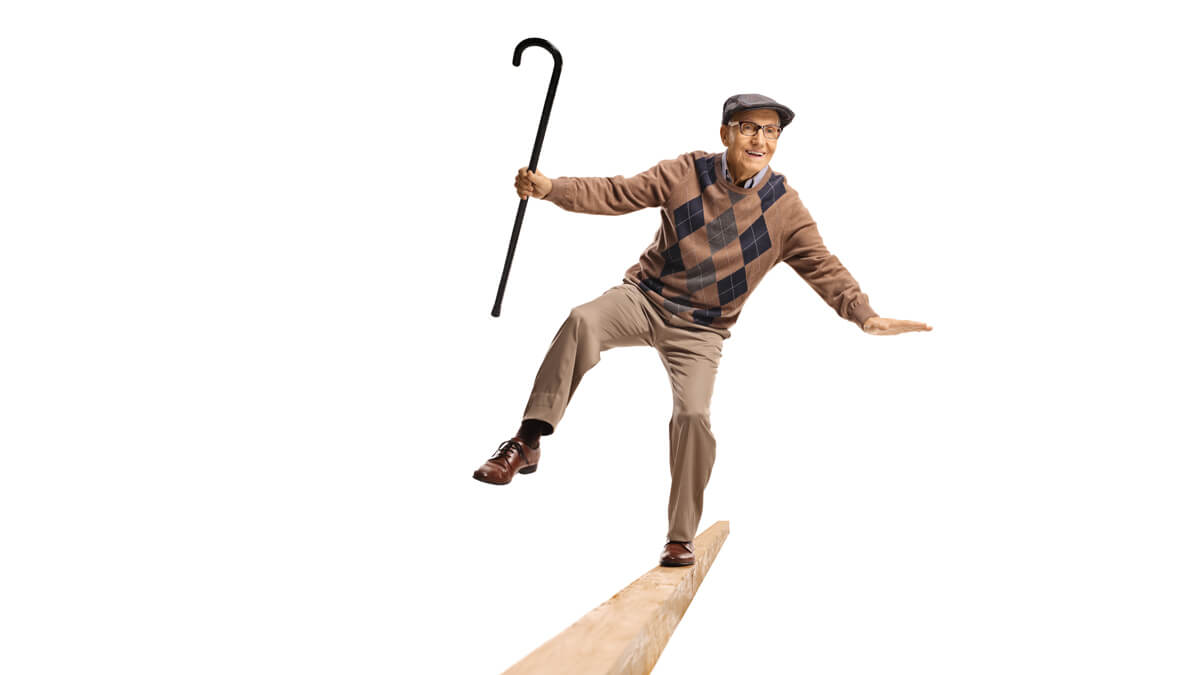As a master personal trainer and performance coach, I’ve served as head strength coach to many teams, agencies and showcase athletes. However, I had an experience many years ago that was truly an eye-opener. A wonderful client I was training, who was well into her 80s waltzed into my studio with a smile, beaming from ear to ear. I inquired as to what she was so happy about and she responded: “For the first time in years, I have the strength to put dishes up on the top shelf of my kitchen cupboard.”
You could have knocked me over with a feather. Having worked with so many athletes, I never even considered that someone wouldn’t be able to place dishes on a shelf.
Some individuals don’t realize that as they age, they gradually lose certain physical faculties. One of those skills is balance, which, by definition is “To keep something in a steady position so that it does not fall.” That sometimes sounds like us, doesn’t it?
Aging changes people. Eyesight dims, muscles weaken and stability becomes somewhat of a deteriorating skill, not unlike athletic capability. As folks age, their balance suffers because certain sensory elements diminish.
Did you know that 40% of all seniors in the United States have equilibrium issues? That’s more than 18 million people and nearly 300 million worldwide. In fact, balance disorders are among the most common reasons those over the age of 65 visit their health care providers.
Many people think balance involves only a strong lower body, but that’s just not true. To maintain proper and constant stability and footing, several different parts of the body must work together simultaneously: the eyes; the vestibular system of the inner ear, which is the brain’s balance center; the cerebellum, the part of the brain that coordinates timing and muscle movements; the brain, which receives, processes and interprets information; and the nerves and muscles.
Even for those not overly concerned with falls, exercise and balance training for seniors provides benefits such as improvement of the musculoskeletal system – bones, cartilage, ligaments, tendons and connective tissue – better reaction time and improved cognitive ability.
Before beginning any exercise regimen, make certain you have been cleared by your doctor to proceed. Here are a few simple balance exercises. I recommend that a strength professional demonstrate and explain to you the proper training form and technique.
Single leg balance: Stand with your feet shoulder-width apart. Extend your arms out to the sides, then slowly lift your right knee off the floor. Straighten your leg out in front of you, hold for 30 seconds, then relax.
Flamingo pose: Stand with your feet shoulder-width apart, while placing your hands on a wall. Raise your right leg up to the hip, as though you are marching. Lower and do the same with the left leg. Increase difficulty by going a little faster. Repeat 10 to 20 times.
Tightrope walk: This exercise can be performed by using a line of tape or even the lines between flooring tiles. Pick a destination to walk toward. Like walking a tightrope, extend your arms out to the sides, then start walking slowly but carefully, with your feet in line, heel to toe.
An amazing balance exercise I share with my senior clients is “football drills.” We start with an easy underhand toss from about 6 feet away. Clients are instructed to catch the football with both hands. It’s not necessarily about catching the ball but rather moving in conjunction with the ball. As their skill-set improves, they are instructed to gently catch the football with one hand. In order to do this successfully, they must step back to cradle the ball. They are usually not even aware of this action, because they are concentrating on catching that football. Some clients get really good at this. In fact, I had a client in her mid-80s who had never even touched a football before. She got so proficient and had so much fun that one day she and her husband were standing side-by-side, alternating one-handed catches. While I was throwing to him, she actually stepped forward and intercepted his pass, one-handed.
Keep moving, pushing and training, and enjoy a genuine upsurge in your own balance confidence.
*David Crocker is a personal trainer in Landrum, South Carolina.
By David Crocker
